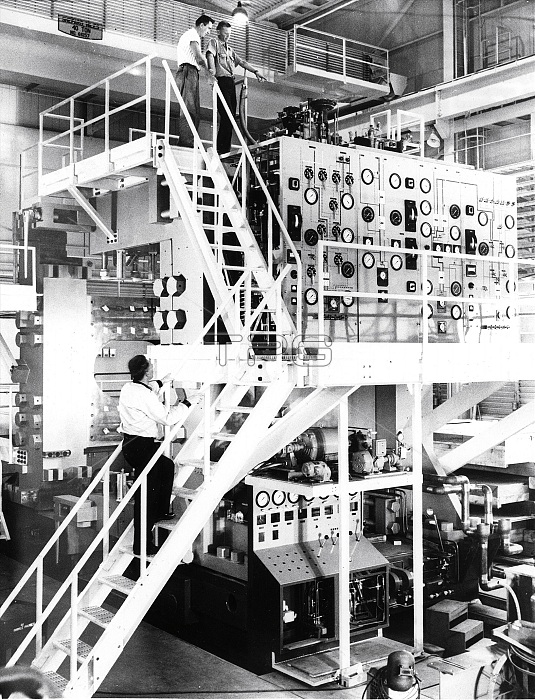
Inside the 80 inch Bubble Chamber Building at the Brookhaven National Laboratory. At the floor level is the hydraulic control panel for the elevation and rotation of the entire bubble chamber structure, 1963. A bubble chamber is a vessel filled with a superheated transparent liquid (most often liquid hydrogen) used to detect electrically charged particles moving through it. The bubble chamber is similar to a cloud chamber, both in application and in basic principle. It is normally made by filling a large cylinder with a liquid heated to just below its boiling point. As particles enter the chamber, a piston suddenly decreases its pressure, and the liquid enters into a superheated, metastable phase. Charged particles create an ionization track, around which the liquid vaporizes, forming microscopic bubbles. Bubble density around a track is proportional to a particle's energy loss. Bubbles grow in size as the chamber expands, until they are large enough to be seen or photographed. Brookhaven, which originally was owned by the Atomic Energy Commission, is now owned by the Commission's successor, the United States Department of Energy, which subcontracts the actual research and operation to universities and research organizations.
| px | px | dpi | = | cm | x | cm | = | MB |
Details
Creative#:
TOP22170537
Source:
達志影像
Authorization Type:
RM
Release Information:
須由TPG 完整授權
Model Release:
N/A
Property Release:
No
Right to Privacy:
No
Same folder images:

 Loading
Loading